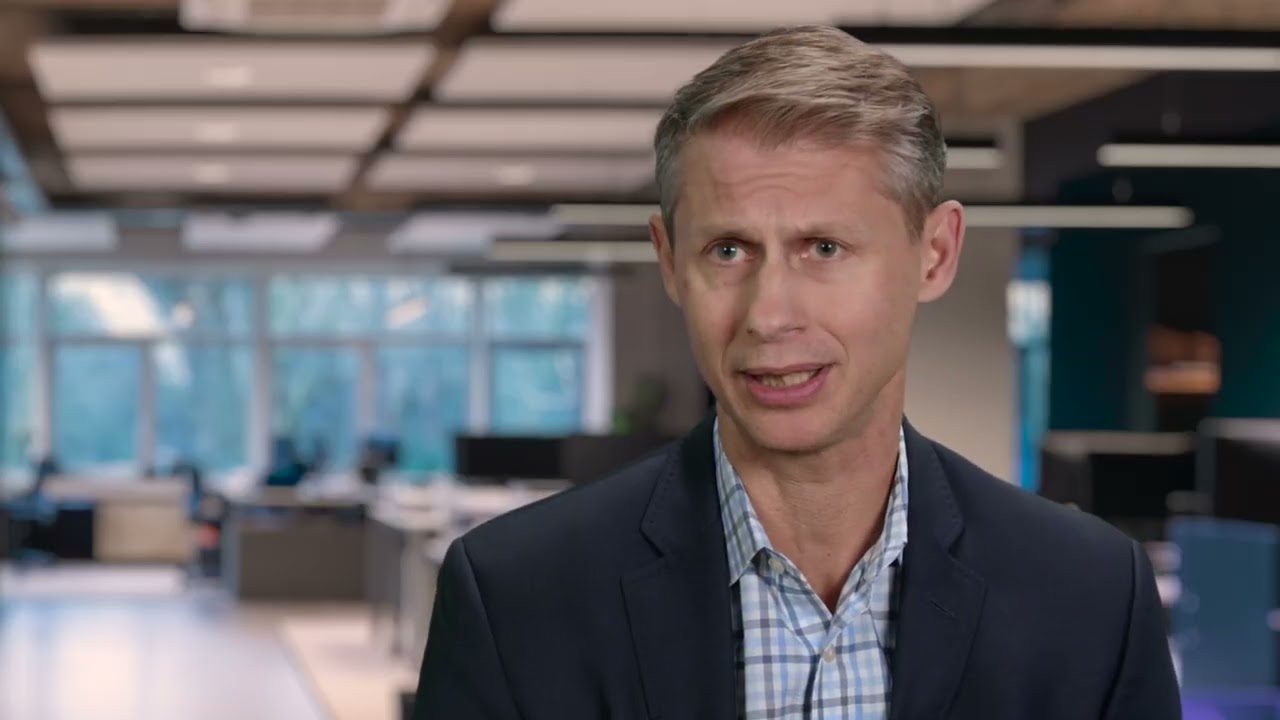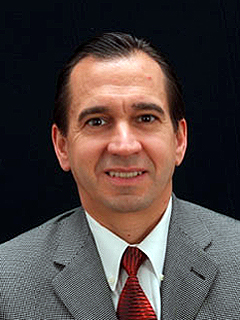Building a long-term path for growth and meeting short-term deadlines
KPMG and Oracle ERP help S&P Global reach new heights in the cloud

KPMG and Oracle ERP help S&P Global reach new heights in the cloud
Client
S&P Global Inc.
Industry
High-Tech
Primary goal
Upgrade and standardize existing Oracle software
Primary platforms
Oracle Cloud ERP
When an acquisition doubles your revenue in your largest market, there are some big numbers at play—especially when you’re a $48 billion CPG company. And the bigger the numbers, the bigger the impact of every strategic and tactical decision you make. You can’t afford to have your visibility clouded and your decision-making hampered by having two disparate financial operations functions each with its own systems, software, and people. So, when a global CPG company found itself in this situation, it called on KPMG to drive fast, smooth, cost-efficient integration of financial operations.
1
and global alignment between cross-functional teams
2
into consolidated spend driving meaningful insights and more proactive decisions
3
the monthly close cycle
4
revenue and sales forecasting
Key outcomes
Making a measurable difference
Avoided extra costs
by meeting Oracle on-premises de-support deadline
Positioned company
for future growth and acquisitions
Realized an
“asset light” technology strategy via transition to cloud technology
Upgraded
on-premises general ledger platform to Oracle cloud solution
Standardized chart
of accounts and improved data taxonomy
Set foundation
for additional capabilities and scale
Client transformation journey
Acquiring a large organic food and beverage business helped a global CPG company expand its operations and nearly double its revenue in the U.S. However, as with most mergers, the integration posed some challenges. Two disparate IT environments with different accounting and reporting models, separate enterprise resource planning (ERP) systems, and multiple business intelligence (BI) tools required extensive manual intervention and offline data manipulation, preventing uniform reporting and analysis. Data was trapped in silos. Visibility was insufficient. A new CFO and the finance and accounting teams lacked the insight to support effective forecasting and both strategic and tactical decision-making. In a sector as competitive and fast-changing as food products, this company needed to increase visibility quickly.
Acquiring a large organic food and beverage business helped a global CPG company expand its operations and nearly double its revenue in the U.S. However, as with most mergers, the integration posed some challenges. Two disparate IT environments with different accounting and reporting models, separate enterprise resource planning (ERP) systems, and multiple business intelligence (BI) tools required extensive manual intervention and offline data manipulation, preventing uniform reporting and analysis. Data was trapped in silos. Visibility was insufficient. A new CFO and the finance and accounting teams lacked the insight to support effective forecasting and both strategic and tactical decision-making. In a sector as competitive and fast-changing as food products, this company needed to increase visibility quickly.
While this CPG company’s business is spread across two continents (and originates from a number of acquired companies), its financial operations are now centralized and unified. A cloud-based platform extracts and loads data from numerous global sources, then configures and stores it in a central location. Accounting staff across multiple back offices work within a single governance structure and with a single set of streamlined processes, enabling effective reporting and supporting a swift, accurate close. Across the enterprise, visibility is excellent, and insights are at the ready, because analysts can perform real-time calculations and drill down swiftly to the meaning behind the numbers. Unified financial operations helps this $48 billion player predict accurately, plan effectively, and act swiftly—all crucial in a sector where windows of opportunity close as suddenly as they open.
While this CPG company’s business is spread across two continents (and originates from a number of acquired companies), its financial operations are now centralized and unified. A cloud-based platform extracts and loads data from numerous global sources, then configures and stores it in a central location. Accounting staff across multiple back offices work within a single governance structure and with a single set of streamlined processes, enabling effective reporting and supporting a swift, accurate close. Across the enterprise, visibility is excellent, and insights are at the ready, because analysts can perform real-time calculations and drill down swiftly to the meaning behind the numbers. Unified financial operations helps this $48 billion player predict accurately, plan effectively, and act swiftly—all crucial in a sector where windows of opportunity close as suddenly as they open.
There will be more acquisition targets in the company’s future. And with a cloud-based platform, governance framework, and standardized processes in place, integrating financial operations will be a swift, sure process. A successful integration inspired the CFO and global finance team to consider other areas for transformation. From evolving multiple layers of the target operating model within Finance, to jump-starting transformation across other functional areas, a powerful ripple effect began and continues across the enterprise. Having the right tools and processes to support a grander vision driven by meaningful insights will continue to empower positive change.
There will be more acquisition targets in the company’s future. And with a cloud-based platform, governance framework, and standardized processes in place, integrating financial operations will be a swift, sure process. A successful integration inspired the CFO and global finance team to consider other areas for transformation. From evolving multiple layers of the target operating model within Finance, to jump-starting transformation across other functional areas, a powerful ripple effect began and continues across the enterprise. Having the right tools and processes to support a grander vision driven by meaningful insights will continue to empower positive change.
Acquiring a large organic food and beverage business helped a global CPG company expand its operations and nearly double its revenue in the U.S. However, as with most mergers, the integration posed some challenges. Two disparate IT environments with different accounting and reporting models, separate enterprise resource planning (ERP) systems, and multiple business intelligence (BI) tools required extensive manual intervention and offline data manipulation, preventing uniform reporting and analysis. Data was trapped in silos. Visibility was insufficient. A new CFO and the finance and accounting teams lacked the insight to support effective forecasting and both strategic and tactical decision-making. In a sector as competitive and fast-changing as food products, this company needed to increase visibility quickly.
While this CPG company’s business is spread across two continents (and originates from a number of acquired companies), its financial operations are now centralized and unified. A cloud-based platform extracts and loads data from numerous global sources, then configures and stores it in a central location. Accounting staff across multiple back offices work within a single governance structure and with a single set of streamlined processes, enabling effective reporting and supporting a swift, accurate close. Across the enterprise, visibility is excellent, and insights are at the ready, because analysts can perform real-time calculations and drill down swiftly to the meaning behind the numbers. Unified financial operations helps this $48 billion player predict accurately, plan effectively, and act swiftly—all crucial in a sector where windows of opportunity close as suddenly as they open.
There will be more acquisition targets in the company’s future. And with a cloud-based platform, governance framework, and standardized processes in place, integrating financial operations will be a swift, sure process. A successful integration inspired the CFO and global finance team to consider other areas for transformation. From evolving multiple layers of the target operating model within Finance, to jump-starting transformation across other functional areas, a powerful ripple effect began and continues across the enterprise. Having the right tools and processes to support a grander vision driven by meaningful insights will continue to empower positive change.
Poor visibility threatened business objectives.
Acquiring a large organic food and beverage business helped a global CPG company expand its operations and nearly double its revenue in the U.S. However, as with most mergers, the integration posed some challenges. Two disparate IT environments with different accounting and reporting models, separate enterprise resource planning (ERP) systems, and multiple business intelligence (BI) tools required extensive manual intervention and offline data manipulation, preventing uniform reporting and analysis. Data was trapped in silos. Visibility was insufficient. A new CFO and the finance and accounting teams lacked the insight to support effective forecasting and both strategic and tactical decision-making. In a sector as competitive and fast-changing as food products, this company needed to increase visibility quickly.The preconfigured assets and technology accelerators delivered by KPMG Powered Enterprise let ambitious leadership teams take advantage of embedded leading practices to speed up the decision-making process while instilling confidence.
Unified financial operations support global success.
While this CPG company’s business is spread across two continents (and originates from a number of acquired companies), its financial operations are now centralized and unified. A cloud-based platform extracts and loads data from numerous global sources, then configures and stores it in a central location. Accounting staff across multiple back offices work within a single governance structure and with a single set of streamlined processes, enabling effective reporting and supporting a swift, accurate close. Across the enterprise, visibility is excellent, and insights are at the ready, because analysts can perform real-time calculations and drill down swiftly to the meaning behind the numbers. Unified financial operations helps this $48 billion player predict accurately, plan effectively, and act swiftly—all crucial in a sector where windows of opportunity close as suddenly as they open.
A strong foundation that can keep pace with continued growth.
There will be more acquisition targets in the company’s future. And with a cloud-based platform, governance framework, and standardized processes in place, integrating financial operations will be a swift, sure process. A successful integration inspired the CFO and global finance team to consider other areas for transformation. From evolving multiple layers of the target operating model within Finance, to jump-starting transformation across other functional areas, a powerful ripple effect began and continues across the enterprise. Having the right tools and processes to support a grander vision driven by meaningful insights will continue to empower positive change.
“When something doesn't go right, KPMG's going to speak up. We’ve worked with other consultants that weren’t ready to do that, so we really wanted to hear the truth throughout the project. And whatever the problem, it always became a team challenge, and they were ready to solve it. We always got the straight story from KPMG, and we always knew that they had our back.”
Chris Craig
Chief Accounting Officer, Controller and SVP of Finance, S&P Global, Inc.


S&P Global is a company who provides essential intelligence to make critical financial decisions with conviction. S&P Global has been around for almost 150 years. Our customers include the largest banks, the largest airlines, anyone who is dealing in the commodity space, anybody who is providing financial advice to institutional investors, to commercial investors, to a wide range of customers.
Our reporting needs became different as our company and our business model evolved. Reporting across our different lines of business became more disaggregated, became more fragmented, and was just more and more untenable. As we bought companies, as we sold companies, as we combined into our new iteration of our new operating model, consistent, clear, concise reporting became increasingly challenging. So as we went through and started looking into the future, we really needed a new solution to streamline our financial accounting reporting.
The team at Oracle and how they associated our success and their success as almost one and the same is what really drove Oracle being the best solution for us. The people and the Oracle team just worked with us dynamically, progressively to really build a great solution that we as a company could use going forward.
KPMG has a longstanding relationship with S&P Global. Moving into the Oracle platform, when we looked at who I felt we could work with effectively after going through an iterative process, we really found that culturally KPMG's values aligned to our values. They were honest, transparent, decisive, open, and collaborative. I think KPMG's partners and their team are approachable, probably the most important thing. together we can find the solutions. I think that the collaborative and solution-oriented team who's open to new ideas is what keeps me with KPMG.
KPMG's solutions oriented. KPMG comes in and helps me identify the facts, the considerations, the full complement of challenges that we have, and really iterate to a solution. I think that partnership with KPMG to iterate on solutions rather than come and pronounce the solution is one of the defining characteristics of why I really enjoy working with KPMG, is you get there together. They're really looking at my needs, understanding our challenges, and really crafting the storyline together.
I think every relationship requires investment. And when I look at the team at KPMG, they are here to ensure both our mutual success. And I feel that when I'm working with KPMG. I think that having that humility to work together, to not feel like they always have to be right, is terrific. It creates a more collaborative and open environment where you can really brainstorm with new ideas. that humility balanced with a true desire for the truth just brings the relationship to the next level.
Part of the journey is just having the right partners that are willing to go invent the future together with you. Just to stay in front of disruption, we're going to have to keep changing. So when I look at the future and where we want our industry to go and where we want to go through and make our mark, they're just going to be a great partner to go through and solve our challenges that we haven't even thought of yet.
KPMG was already acquainted with S&P Global’s finance processes through previous advisory work on internal audit and tax. And in the run-up to the IHS Markit deal, we also advised on integrating financial systems. So, we were well-prepared to develop a target operating model (TOM) for the combined company’s financial systems. The goal was to adopt a scalable, cloud-based solution that could be seamlessly integrated with existing processes at IHS Markit. While other technology providers were considered, S&P Global’s familiarity with Oracle, Oracle’s market-leading ERP and EPM features—and our own status as a key Oracle alliance partner—made its software the clear favorite.
Along with defining how key processes, personnel, and technology should function, and envisioning an optimal model, we also considered how to gather financial performance insights and data to improve decision-making, as well as governance and risk management. Finally, it was understood that the ideal system had to be flexible and scalable enough to handle new services, lines of business, and further acquisitions.
As always, preparing for the transformation was not a top-down process driven by senior management. Input and feedback from a range of stakeholders into the financial system design was also critical. Fortunately, both S&P Global and our KPMG team benefitted from strong leadership and advocacy for the project from the company’s Chief Accounting Officer, who helped build support from within. Less fortunately, virtually all planning and validation sessions had to be conducted remotely due to the COVID-19 pandemic. While this seemed like a daunting obstacle at first, we soon learned that communication and consultation were not seriously affected, thanks to the collaboration and project management tools embedded in KPMG Powered Enterprise.
Significantly, the S&P Global financial transformation was one of the initial KPMG and Oracle projects to follow the Scaled Agile Framework (SAFe) for software implementation, which differs from the “waterfall” approach used on most ERP/EPM projects. A possible reason for this is that packaged software solutions such as cloud ERP suites typically have inherent dependencies. SAFe is leveraged with applications requiring iterative build cycles with constant end-user feedback. After experiencing an earlier, suboptimal project to revamp the company’s order-to-cash system, S&P Global wanted to be more directly involved in this much larger effort.
Adapting to SAFe meant both S&P Global and KPMG team members had to obtain consistent training as SAFe Agile practitioners. This was no small effort, but it paid off: Leveraging the SAFe Agile delivery methodology allowed us to reduce the project’s overall timeline by a month and prepare for launching the new platform in a single release at the start of the company’s fiscal calendar in January 2022.
Another benefit from SAFe was that every piece of the solution was tested many times—not only by the configurators and developers, but also objective quality assurance specialists and real business users. The waterfall model typically used for ERP projects doesn’t allow as much rigor in testing beyond large test events. Our KPMG team also held pilot testing events to get end users comfortable with the system and resolve any quality concerns prior to launch.
The new cloud-based Oracle financial software platform included modules for managing the following functions:
Instead of an all-out “big bang” deployment across the entire organization, the launch of S&P Global’s new financial solution was a controlled roll-out designed to match the period close process to allow for a clean transition between fiscal years. It started with subledger functions such as accounts payable and accounts receivable, which were taken live gradually to allow for any adjustments, followed by fixed assets and cash management. Once these proved viable, a full rollout across all S&P Global offices in 44 countries was executed. All told, this global launch took less than a month, from late December 2021 to mid-January 2022.
The rollout of the new all-Oracle system also allowed S&P to save money and improve functionality by retiring a range of third-party applications and tools. IBM’s TM1 software for reporting was the most significant, along with others from Toad, Maestro, and Blackline. The shift to a single Oracle-based platform also promises to deliver a more flexible, scalable architecture overall.
Initial data indicate that the new solution is on track to achieve a cost-of-finance reduction of about 15 percent. To measure future results, we set up a KPI monitoring feature that tracks progress toward key targets. And our ongoing relationship with S&P Global management will allow us to observe their experience with the new solution up close.
Looking ahead, the real benefit for the combined company is the establishment of a consistent cost structure for financial reporting that can be scaled to integrate IHS Markit and other future acquisitions or new businesses to sustain the growth plan.
KPMG is now implementing the new Oracle Solution across newly acquired IHS Markit locations in 48 countries, a process which will continue through the remainder of 2022. This phase of the company-wide transition is likely to be more complex, since users will be migrating from an SAP platform to Oracle Cloud. To address this, plans call for additional communications, knowledge transfer and training.
Users will also be introduced to the TOM defined for S&P Global, with its new processes, data model, and reporting. To offset these challenges, our team has refined its SAFe Agile approach based on lessons learned during the S&P Global transformation. New measures to increase capacity and efficiency during the early phases of the project will help to shorten the schedule overall.
Meanwhile, the success of our Powered Enterprise approach and Oracle’s cloud solutions for finance has management evaluating follow-on projects to transform procurement and IT across the combined enterprise.
Let’s talk about where you are now and your goals for the future.

